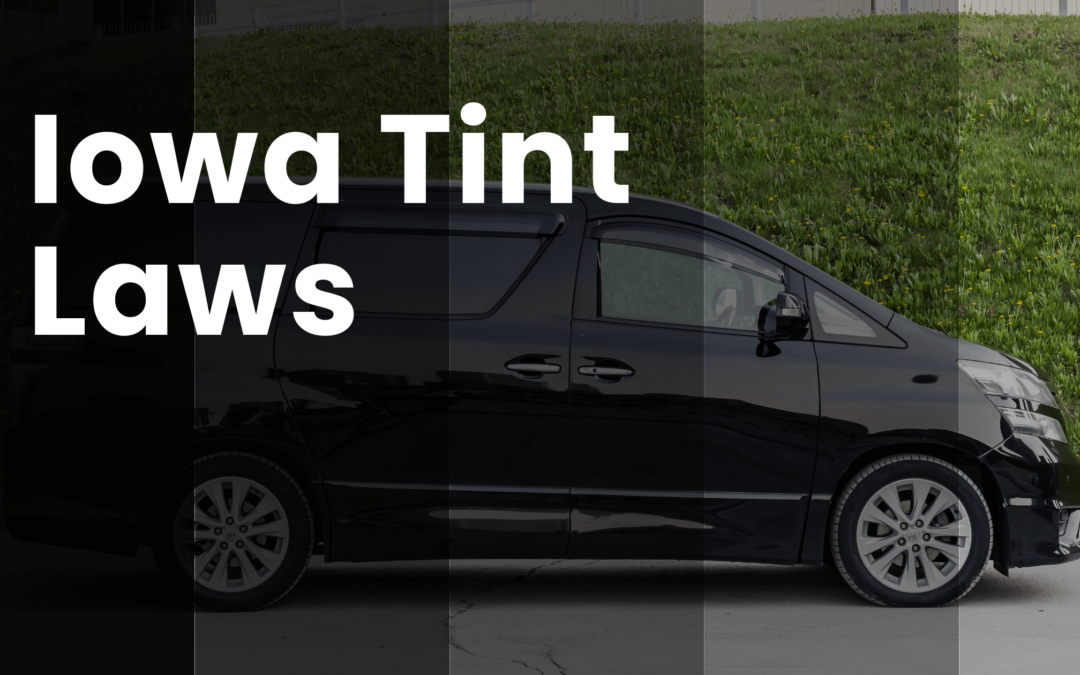Iowa Tint Laws
The Iowa tint laws detail specific automotive tint laws for various cars and SUVs. Car window tinting laws in Iowa were initially established in 1983. We aim to provide you with a detailed insight into these regulations, encompassing essential elements such as permissible tint darkness, reflection criteria, and additional rules that pertain to window tinting in the state.
Disclaimer
Even though I aced Commercial Law at school and strive to provide accurate and informative content, it’s important to note that I am not a legal expert. The information presented in this blog is based on my interpretation of the subject matter, and laws can vary by location and change over time. It is strongly recommended that readers verify all sources of information and consult with legal professionals or relevant authorities before making any decisions related to tint laws.
Understanding the Terminology Regarding Tint Laws
The most important part of the legislation is understanding what VLT is and how law enforcement services check or test the percentage.
What is VLT
VLT, or Visible Light Transmission, is a measure of the amount of visible light that can pass through a window tint or film. It is commonly used to determine the darkness or opacity of window tints, and it’s an important factor in window tinting laws and regulations.
VLT is typically expressed as a percentage. For example, a window tint with a VLT of 20% allows only 20% of visible light to pass through, making it relatively dark and less transparent. Conversely, a window tint with a VLT of 70% allows 70% of visible light to pass through and is much lighter and more transparent.
How do Law Enforcement services test the VLT percentage?
Window tinting laws vary by jurisdiction, and they often specify the maximum allowable VLT for different types of windows on a vehicle, such as the front windshield, front side windows, rear side windows, and rear window. These laws are designed to ensure that drivers have adequate visibility and that law enforcement can see into vehicles for safety and identification purposes. The manner that they go about testing the VLT is by using a VLT gauge/meter.
Here is a YouTube Short from @TrafficServices and @TorontoPolice showcasing the device and how it works. Even though it is in Canada, it still is helpful to understand how the tint darkness is measured.
Window Tint Darkness in Iowa:
The measure of visible light allowed through your car’s windows is denoted as VLT (Visible Light Transmission). Iowa’s laws stipulate specific VLT percentages, which vary for sedan cars and SUVs or vans.
Iowa Car Tint Laws For sedans:
- Windshield: Must allow more than 70% of light to pass through.
- Front Side windows: Must allow more than 70% of light to pass through.
- Back Side windows: Any level of darkness is acceptable.
- Rear Window: Any level of darkness is permissible.
Tint Laws For SUVs and Vans in Iowa:
- Windshield: Must allow more than 70% of light to pass through.
- Front Side windows: Must allow more than 70% of light to pass through.
- Back Side windows: Any level of darkness is acceptable.
- Rear Window: Any level of darkness is permissible.
| Type of Window | Sedans | SUVs/Vans |
|---|---|---|
| Windshield | Must allow more than 70% of light transmission | Must allow more than 70% of light transmission |
| Front Side Windows | Must allow more than 70% of light transmission | Must allow more than 70% of light transmission |
| Back Side Windows | Any level of darkness acceptable | Any level of darkness acceptable |
| Rear Window | Any level of darkness permissible | Any level of darkness permissible |
Window Tint Reflection in Iowa:
Window tinting can reflect incoming light, thereby reducing glare and heat. Iowa’s tint law allows for a certain level of window reflection when using tint, although the law is not specific about what constitutes “excessive reflectiveness.”
Reflectivity Tint Laws For both Sedans and SUVs/Vans:
- Front Side windows: Must not exhibit excessive reflectiveness, though the law does not provide specifics.
- Back Side windows: Must not exhibit excessive reflectiveness, and again, the law does not provide specifics.
Other Iowa Window Tint Rules and Regulations:
In addition to tint darkness and reflection specifications, Iowa has various other pertinent regulations regarding window tinting:
Side Mirrors
There are no specific restrictions concerning side mirrors in Iowa.
Restricted Colors
The law does not explicitly prohibit any specific tint colors.
Certificates
Film manufacturers are not obliged to certify the film they distribute in the state.
Stickers
No sticker is required to identify legal tinting.
Medical Exceptions
Iowa no longer allows darker window tinting based on medical exemptions since July 2012.
Regulations for Out-of-State Drivers
The same regulations apply to out-of-state drivers as those for drivers living in the State.
If you are from States such as Minnesota, South Dakota, Nebraska, Missouri, Illinois, and Wisconsin, you are expected to abide by these laws and regulations.
It’s important to note that interpretations of Iowa’s tinting laws and regulations may differ depending on your county or place of residence. To ensure full compliance, we strongly recommend verifying this information with your local DMV or law enforcement authorities.
Our information regarding window tint laws in Iowa was last updated in 2023. We take pride in being a trusted industry leader, dedicated to providing accurate and current information about window tint laws. If you discover any inaccuracies or outdated data, please do not hesitate to contact us. Your trust in our resources is of utmost importance, and we are committed to providing you with the most reliable information available.

